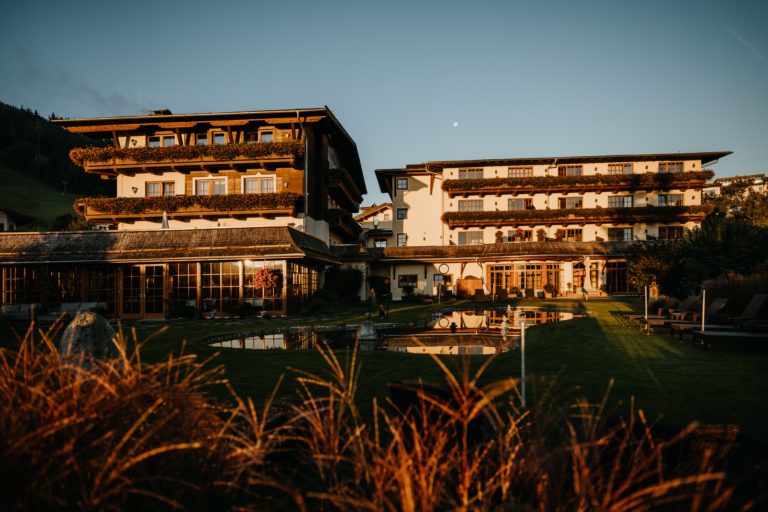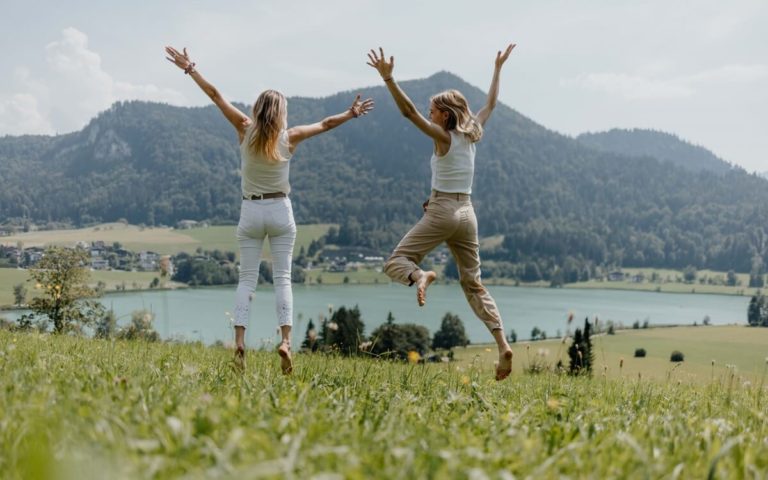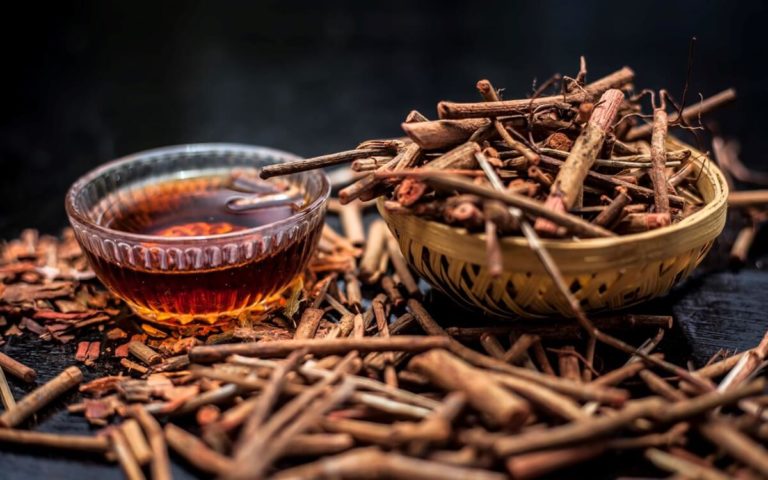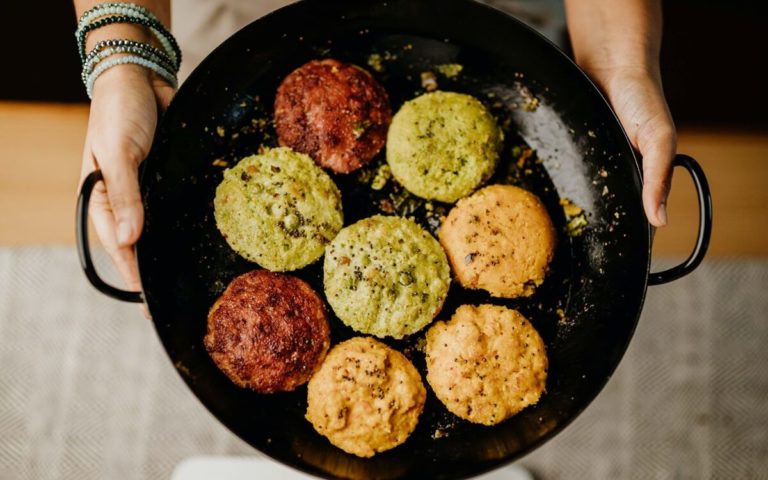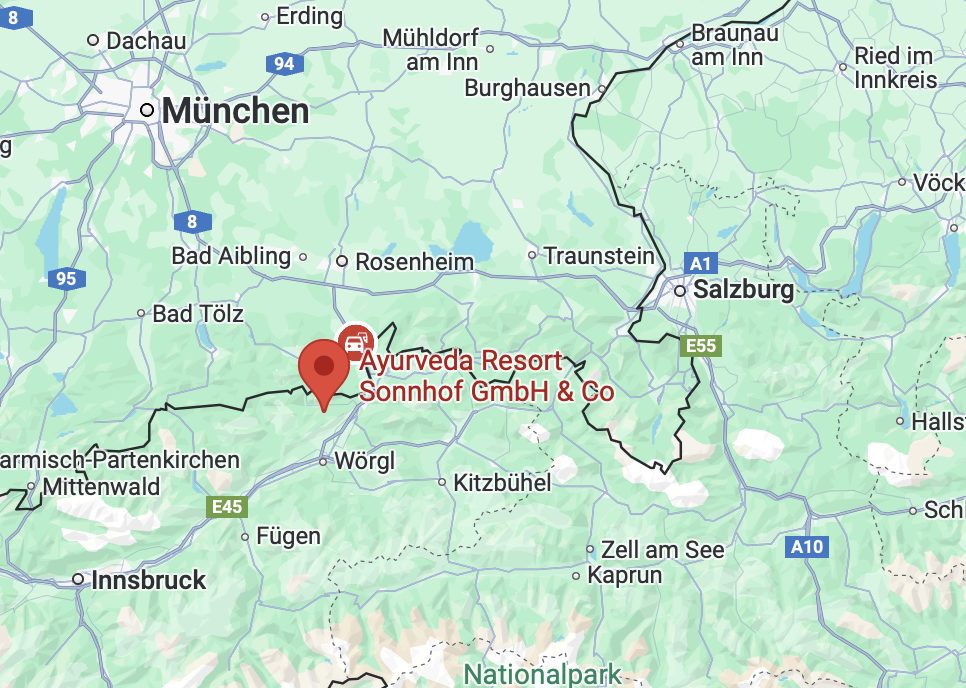An Ayurveda massage releases inner blockages, eases tension and promotes physical and mental relaxation. There are various massage techniques tailored to your personal needs. The procedure and the effect also change depending on the treatment.
The Ayurvedic massage
The generic term Ayurveda massage refers to the numerous different techniques and types of ayurvedic art of healing are understood. The practices unfold their effect in a very special way and convey a feeling of "being touched", which is accompanied by a holistic physical sense of well-being.
The origins of these Ayurvedic practices lie in India, where they are accorded a special status. Ayurvedic massages are used for both health and medical purposes. Depending on individual needs and dosha type, there is a suitable type of massage and treatment.
Types of Ayurveda massages
The type of Ayurveda massage you need depends on various factors. These include, for example, your constitution or your individual complaints.


Discover our high-quality massage oils now
Discover high-quality body care products and massage oils in our European Ayurveda® online store - for soothing Ayurvedic massages at home.
The classic Abhyanga massage
Abhyanga means "oiling with loving hands" and is a classic Ayurvedic full-body massage. The "great Ayurvedic oiling" is the most frequently used Ayurvedic massage, especially in the West. It is performed with light pressure and harmonious, flowing movements.
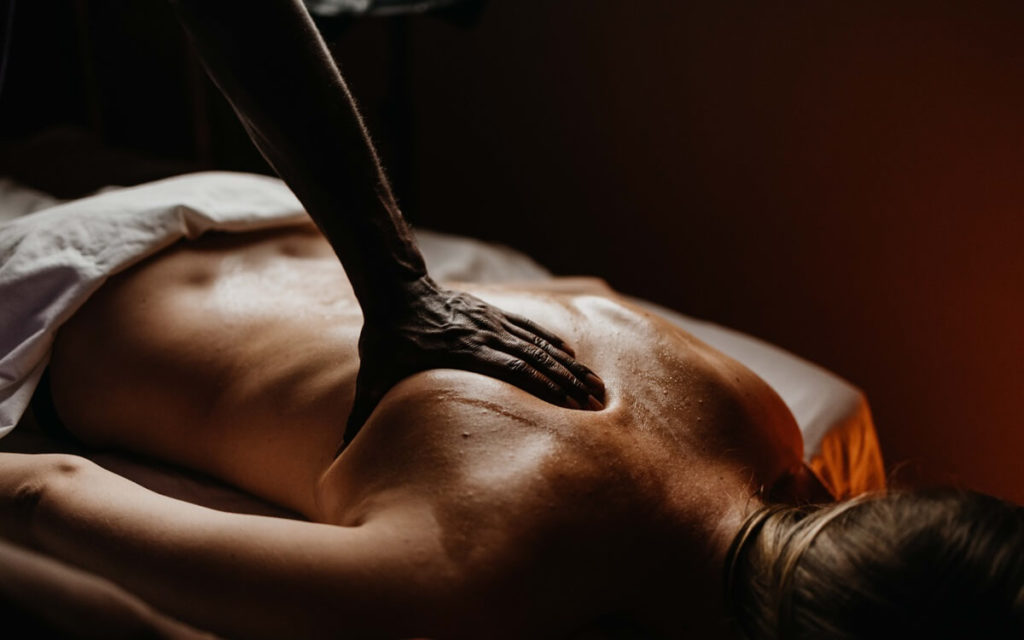

The oils used play an important role in this treatment and are selected according to the complaints and the doshas. The aim of the full body massage is to loosen blockages and muscle tension. It also aims to increase physical and mental relaxation.
The subtypes of the classic Abhyanga massage include:
- Udarabhyanga: Abdominal massage
- Mukabhyanga: facial massage
- Padabhyanga: Ayurvedic foot massage to reduce stress
- Synchronized Abhyanga massage by two masseurs at the same time
Garshan massage
In contrast to the classic Abhyanga massage, the Garshan massage is a dry massage that uses no oils at all.
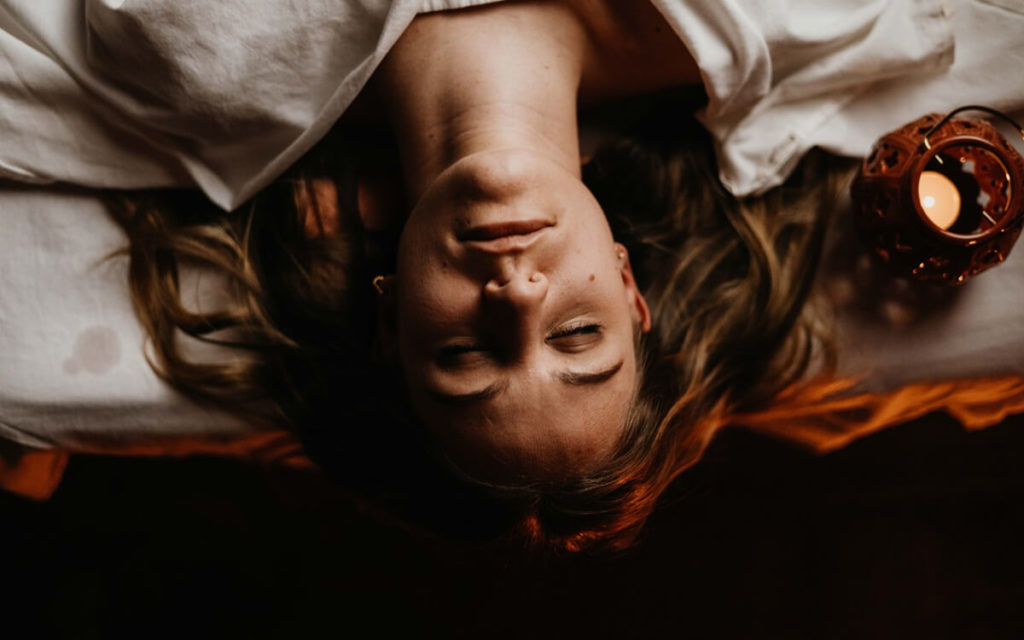

Instead, the masseur wears special silk gloves. These have a light exfoliating effect and gently remove dead skin cells. They also increase blood circulation and leave your skin feeling revitalized and refreshed.
Udvartana massage
Another dry massage is the Udvartana massage, which is accompanied by a skin peeling. A mixture of flour and crushed herbs is used for this massage, which is then massaged into the skin.
It improves the appearance of the skin and can alleviate cellulite when used regularly. Herbal powders or pastes help with the application and are massaged in towards the heart.
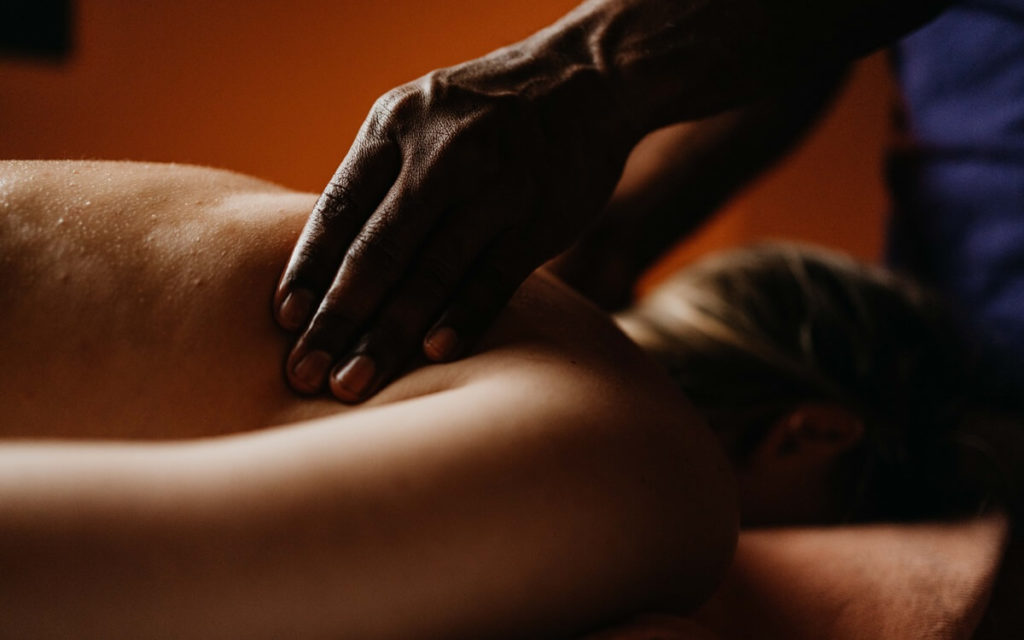

Possible areas of application for the Udvartana massage are
- Circulatory disorders
- Lymphatic drainage disorders
- Water retention
- Cellulite
- Itching
- Excessive sweating
For sensitive skin types, the skin is first treated with massage oil. Similar to the Udvartana dry massage, the Udgarshana massage can help with cellulite, itching and impaired lymph flow.
Upanahasveda massage
This powerful back massage aims to release blockages and loosen the muscles in your entire body. The aim is to relieve tension and pain. The Upanahasveda massage also has a soothing and relaxing effect. It therefore helps to relieve stress and inner turmoil.
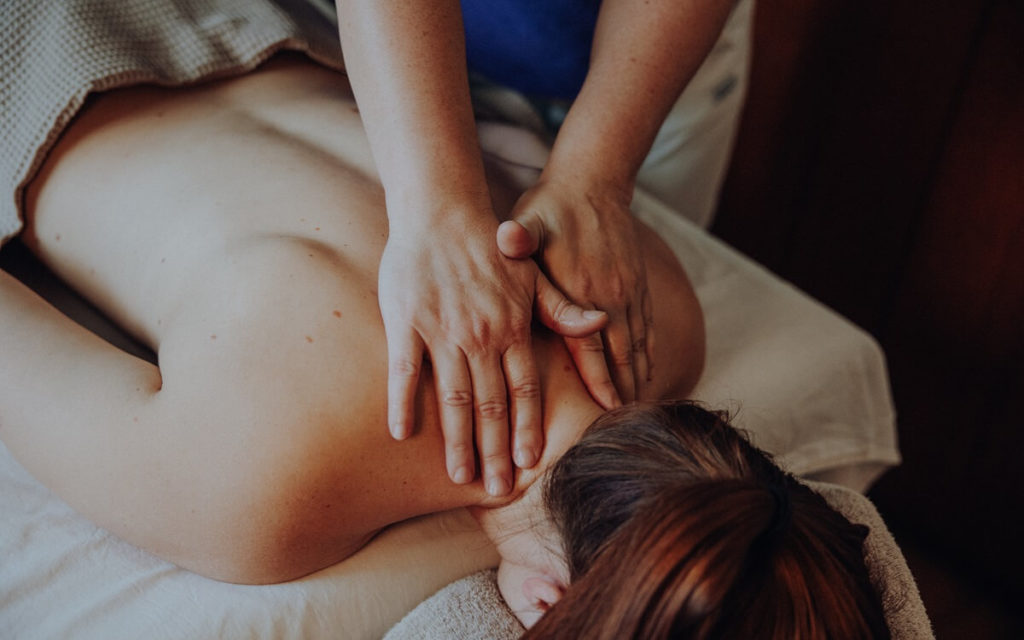

Warm oils and a Lepa herbal poultice after the treatment complete the treatment and ensure increased well-being. In Ayurveda , lepa is a poultice that can contain Ayurvedic herbs as well as oils and plant juices. It is placed directly on the body and kept warm for a longer period of time.
Jambira Pinda Sveda
The term Pinda Sveda refers to the various stamp massages in Ayurveda. The Jambira Pinda Sveda massage is particularly widespread. This is a heat treatment that stimulates the flow of sweat. Similar to stamps, the cotton bags are pressed onto the various areas of skin.
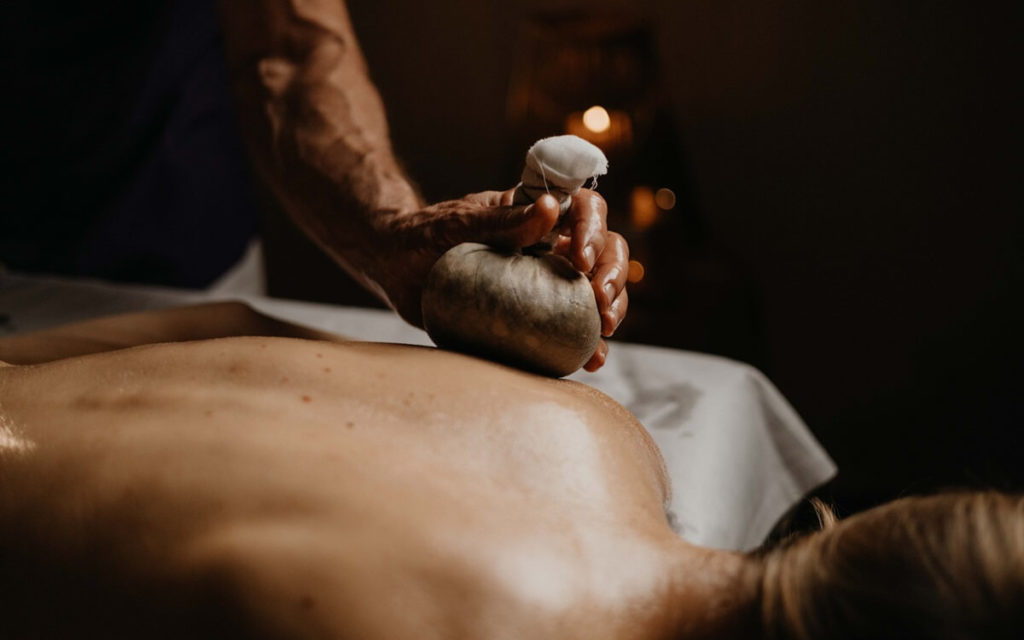

The application possibilities of the Jambira Pinda Sveda massage are manifold:
- Water retention
- Cellulite
- Disturbed lymphatic drainage
- Acidosis
Marma Massage
Ayurvedic marma massage has a lot in common with acupressure. It is based on 108 vital points on which more or less pressure is applied during the treatment.
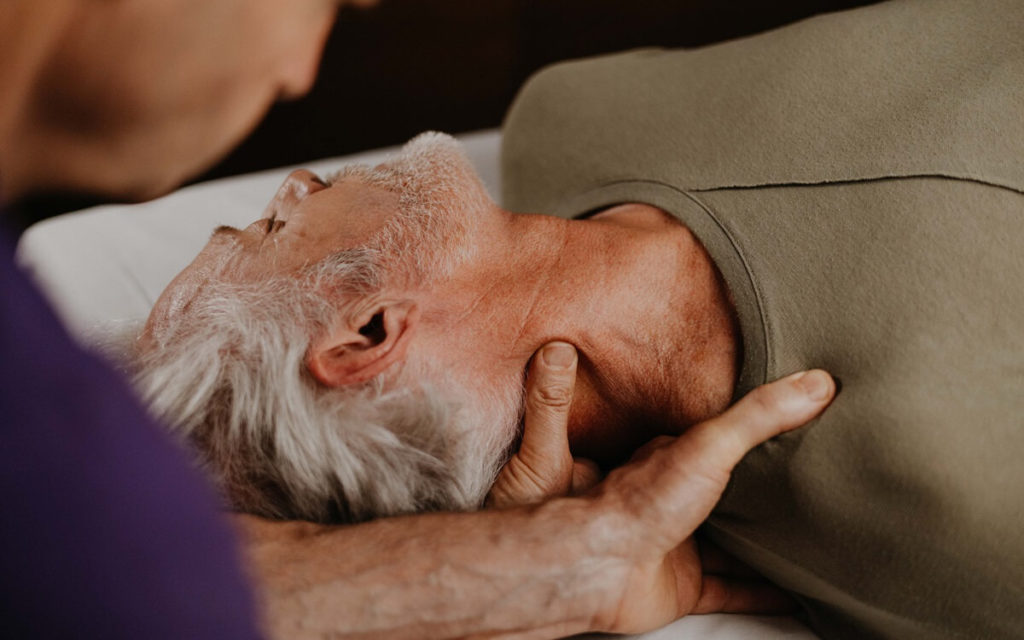

This stimulates the organs and promotes general health. Regular treatment can alleviate tiredness and fatigue and improve the supply of nutrients to the body.
Ayurveda massage techniques
In addition to the different types of Ayurvedic massages, there are also various techniques that are used during a treatment. Of the numerous massage techniques, the following are the most typical:
- Circling around the joints
- Stretching of tissue and muscles
- Stimulation of pressure points
- Depth strokes
These wellness practices are individually adapted to you and your state of health.
Aims of the Ayurveda massage
There are many different types of massage, each of which achieves different effects depending on the area of application. Basically, however, every massage is about improving and supporting your health.
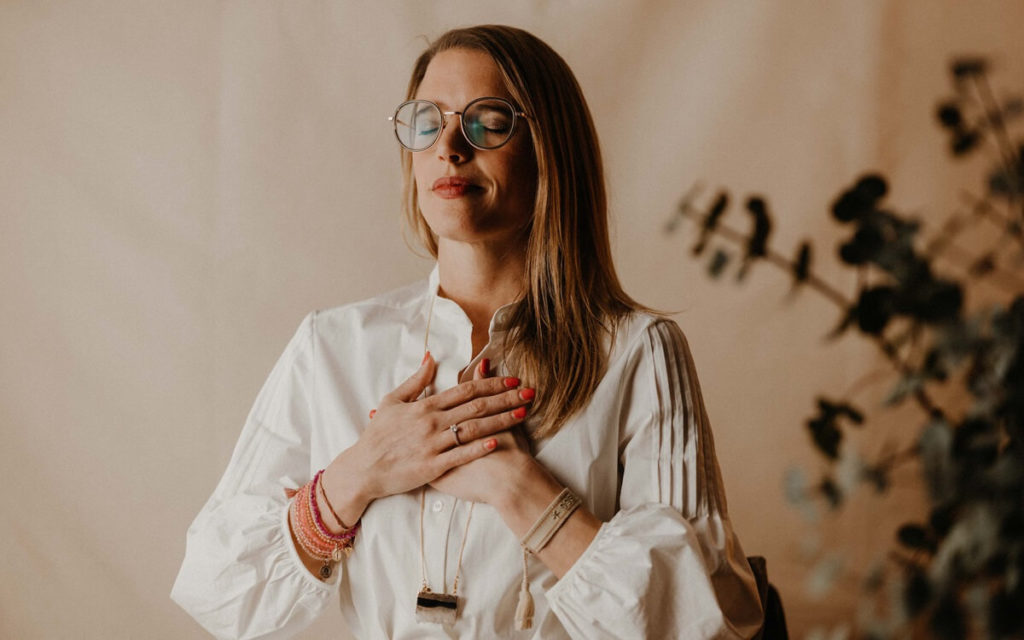

The following indicators are among the goals of Ayurveda massage:
- Elimination of muscular cramps
- Improved sleep quality
- Digestive regulation
- Deep well-being
- Invigorating effects for the cardiovascular system
- Activation of the lymph channels and the nervous system
- Stimulation of skin, muscles and veins
- Removal of harmful substances from the metabolism(detox)
- Improved skin texture
- Stress Relief
- Strengthening the tissue
- More efficiency
The massages are used for both health and cosmetic purposes. They also offer a balance to stressful everyday life and help you to unwind. Restoring inner balance is also one of the positive properties of an Ayurvedic massage.
Preparation and procedure of the Ayurveda massage
Before an Ayurvedic massage, a clarifying anamnesis discussion takes place in which your constitutional types are classified. The right massage is then selected based on this.
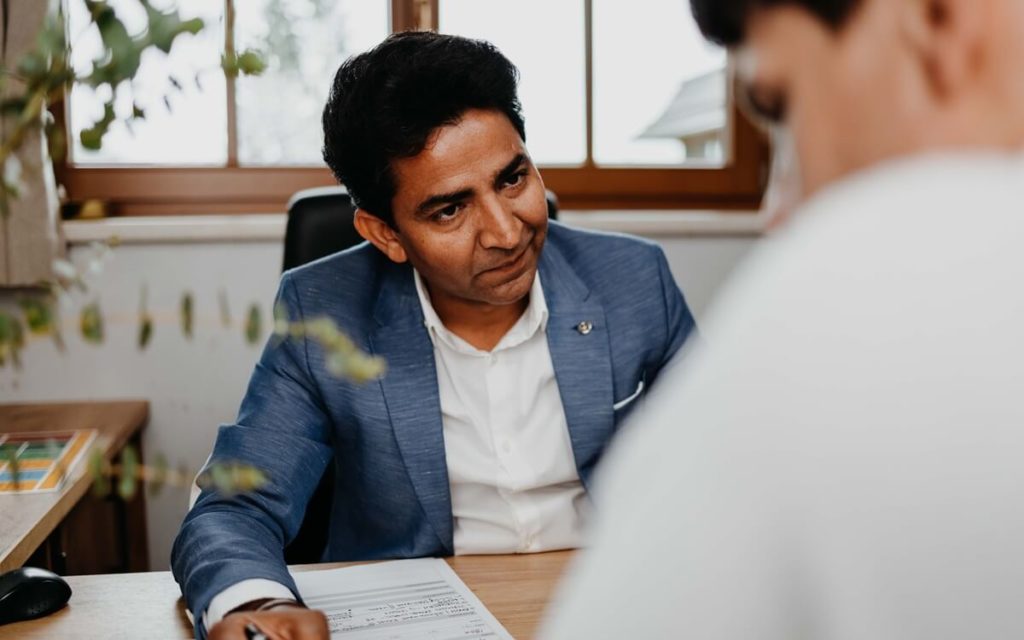

You can ask open questions, express wishes or expectations during this conversation. The massage usually follows the consultation. This lasts around 20 minutes for partial body massages and up to 1.5 hours for full body massages. The massages are carried out lying down so that you can relax completely.
The Ayurvedic principle and European Ayurveda®
Ayurveda is traditional Indian medicine and has been practiced for over 5,000 years. The word is made up of "ayuh" for life and "veda" for science. It therefore refers to the science of life, which has been passed down in the oldest body of knowledge about human nature.
Ayurveda focuses on the holistic harmony of body, mind and soul. It is about restoring physical and mental balance. One of the ways this works is by activating your self-healing powers. Ayurveda refers to an entire philosophy of life that is based on numerous applications.
The traditional Indian Ayurveda teachings are adapted to the needs of our environment in our European Ayurveda®. This has resulted in slower, gentler massages that allow you to calm down and relax.
In addition to massages, a dosha-appropriate diet and cleansing treatments are also essential in Ayurveda. Ayurvedic herbs support the cleansing process in a natural way. They keep the body in balance. Meditation and yoga also allow a gentle connection between body and mind.
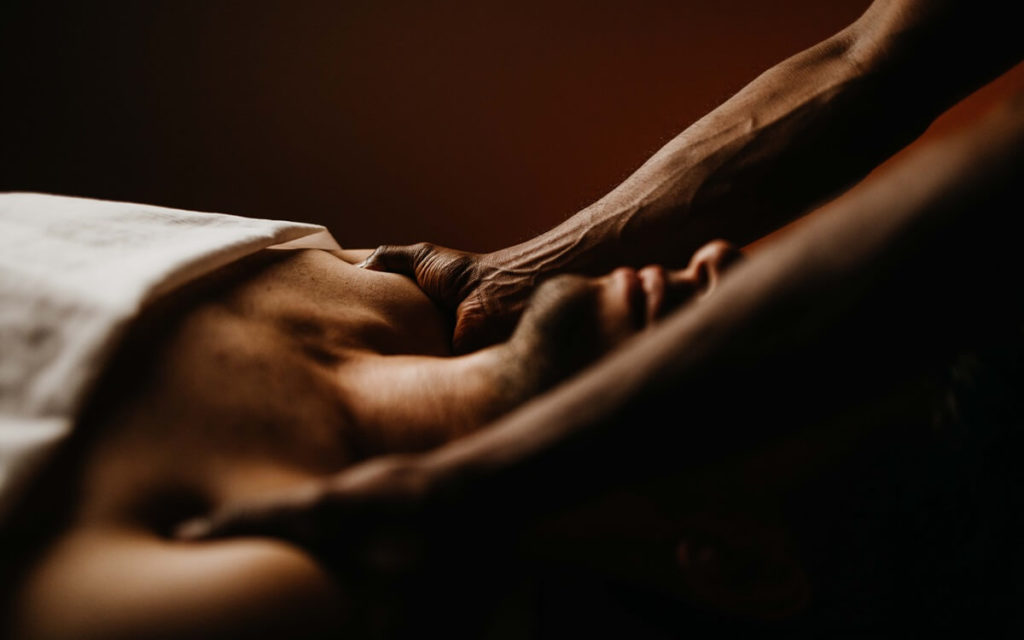

Read more: Abhyanga massage
Ayurvedic health teachings include massages as well as nutrition and yoga. The Ayurveda Abhyanga massage is one of the most beneficial and effective forms of treatment. Abhyanga can be translated from ancient Indian as "great oiling with loving hands".

